8 Essential Steps for Creating Psychological Safety in 2025
In today’s fast-changing workplace, teams face constant shifts in technology, expectations, and work styles. The need for trust and open communication has never been greater.
Creating psychological safety is now the cornerstone of high-performing organizations. It fuels innovation, supports collaboration, and helps teams thrive under pressure.
This article reveals the eight essential steps for creating psychological safety in 2025. Backed by research and real-world examples, you’ll gain practical strategies to foster trust and resilience. Discover how to turn your team into a powerhouse of creativity and performance with a proven roadmap.
Understanding Psychological Safety in 2025
In 2025, creating psychological safety is no longer optional for organizations aiming to thrive in a dynamic, unpredictable world. As workplaces evolve through hybrid models, AI integration, and greater diversity, the need for environments where people feel safe to take interpersonal risks has become mission-critical.
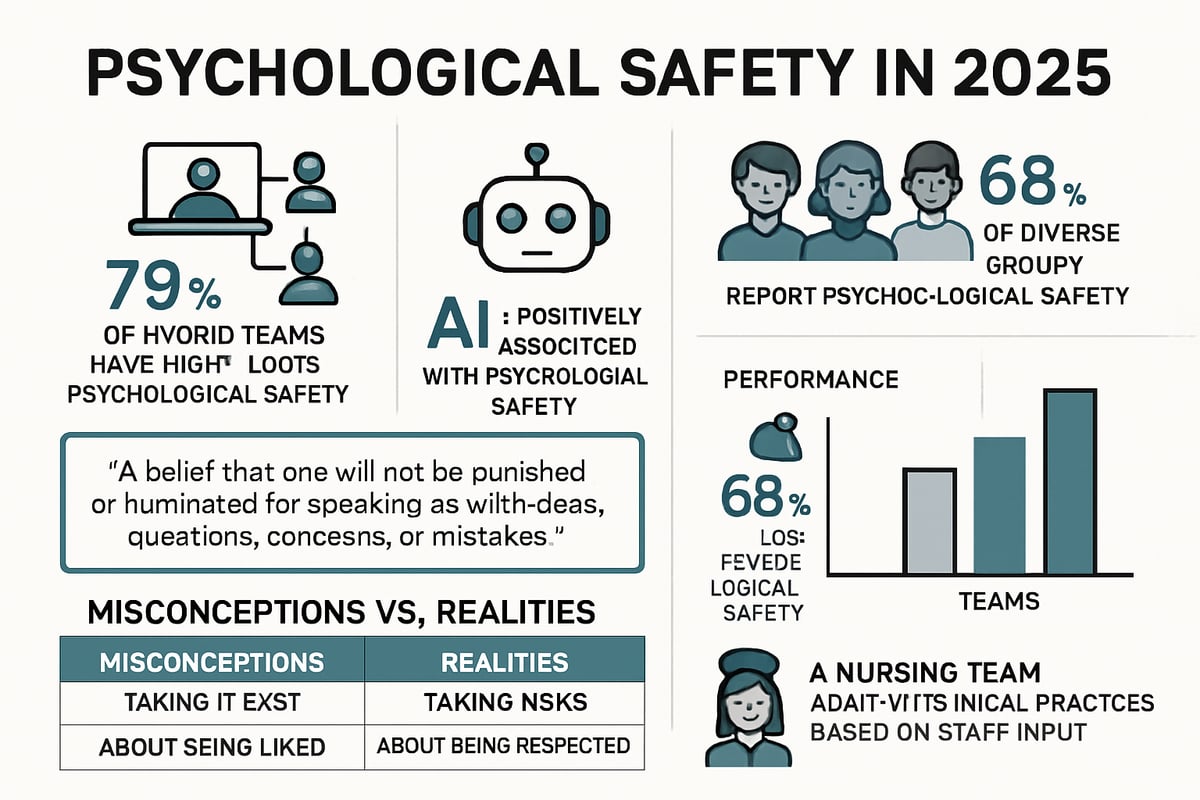
What Is Psychological Safety?
Psychological safety is the shared belief that a team or workplace is safe for interpersonal risk-taking. Amy Edmondson, a pioneer in this field, defines it as an environment where individuals can speak up, ask questions, and admit mistakes without fear of embarrassment or retribution. This foundational principle is at the core of creating psychological safety and drives how teams operate and innovate.
For those seeking a deeper understanding, The 4 Stages of Psychological Safety offers a practical framework for building trust and openness step by step.
Why Psychological Safety Matters in 2025
Organizations that focus on creating psychological safety experience greater adaptability, creativity, and resilience. Research consistently shows that teams with high psychological safety are more likely to report mistakes—not because they make more, but because they feel safe to discuss and learn from them. This transparency leads to better performance and continuous improvement.
A recent study found that over 70% of employees in high-performing teams said they felt comfortable sharing concerns and ideas. As hybrid work, rapid technological change, and diverse talent pools become the norm, psychological safety enables organizations to navigate uncertainty and complexity with confidence.
Common Misconceptions About Psychological Safety
Many leaders misunderstand what creating psychological safety really means. It is not simply about being “nice” or avoiding disagreement. Instead, it is about enabling open dialogue, accountability, and learning from both successes and failures.
| Misconception | Reality |
|---|---|
| It means avoiding conflict | It means having safe, open dialogue |
| It is about being agreeable | It is about encouraging honest feedback |
| Only leaders need to model it | Everyone contributes to psychological safety |
Real-World Example: Learning from Mistakes
One of the most cited examples comes from high-performing nursing teams. Studies revealed that these teams reported more errors than others, not because they were less competent, but because they felt secure enough to openly discuss mistakes. This culture of transparency is a hallmark of creating psychological safety and directly leads to improved patient outcomes and team learning.
The Modern Landscape: Hybrid Work, AI, and Diversity
In 2025, the landscape of work is more complex than ever. Hybrid and remote work arrangements, the integration of AI, and increasingly diverse teams all add new layers to the challenge of creating psychological safety. Leaders must intentionally foster trust and openness across digital and physical spaces, ensuring every voice is valued regardless of location or background.
Ultimately, creating psychological safety is essential for innovation, inclusion, and agility.
The Science and Business Case for Psychological Safety
Creating psychological safety is not just a buzzword in 2025—it is a scientifically proven catalyst for unlocking team potential. Neuroscience research demonstrates that when employees feel secure to speak up, their brains experience reduced threat responses. This safety net allows for higher levels of learning, creativity, and genuine collaboration.
Teams that focus on creating psychological safety consistently outperform those that do not. Why? When people feel safe to share ideas, admit mistakes, or ask questions, they are more likely to innovate and adapt. A key finding from Google’s Project Aristotle highlights that psychological safety is the number one predictor of effective, high-performing teams.
The business case for creating psychological safety is compelling. Organizations that prioritize this foundation see greater engagement, lower employee turnover, and increased creativity. Employees are more willing to contribute, take smart risks, and support one another. In addition, well-being improves, as individuals feel valued and respected for their perspectives.
Let’s break down some of the most impactful outcomes and statistics related to creating psychological safety:
| Outcome | Impact | Supporting Data/Source |
|---|---|---|
| Engagement | Higher levels of participation and motivation | Google Project Aristotle |
| Retention | Lower turnover rates | Workplace Options Study 2025 |
| Creativity | More innovative solutions and ideas | NeuroLeadership Journal |
| Well-being | Improved mental health and satisfaction | WPO 2025 Psychological Safety Study |
| Performance | Teams consistently outperform peers | Project Aristotle, 2025 Surveys |
Ignoring the importance of creating psychological safety comes with significant risks. Teams lacking in this area often experience silence, disengagement, and a reluctance to share new ideas. Innovation stalls, and talented employees may leave for more supportive cultures.
In 2025, trends such as remote and hybrid work, growing emphasis on DEI, and rising mental health awareness make creating psychological safety even more critical. Diverse teams require environments where every voice can be heard, regardless of location or background. Recent studies, such as the Workplace Options 2025 Psychological Safety Study, confirm that organizations investing in psychological safety see measurable gains in satisfaction and retention.
Companies that commit to creating psychological safety report stronger trust, higher morale, and better business results year over year. For more actionable strategies and leadership insights on building such cultures, visit Accountability Now.
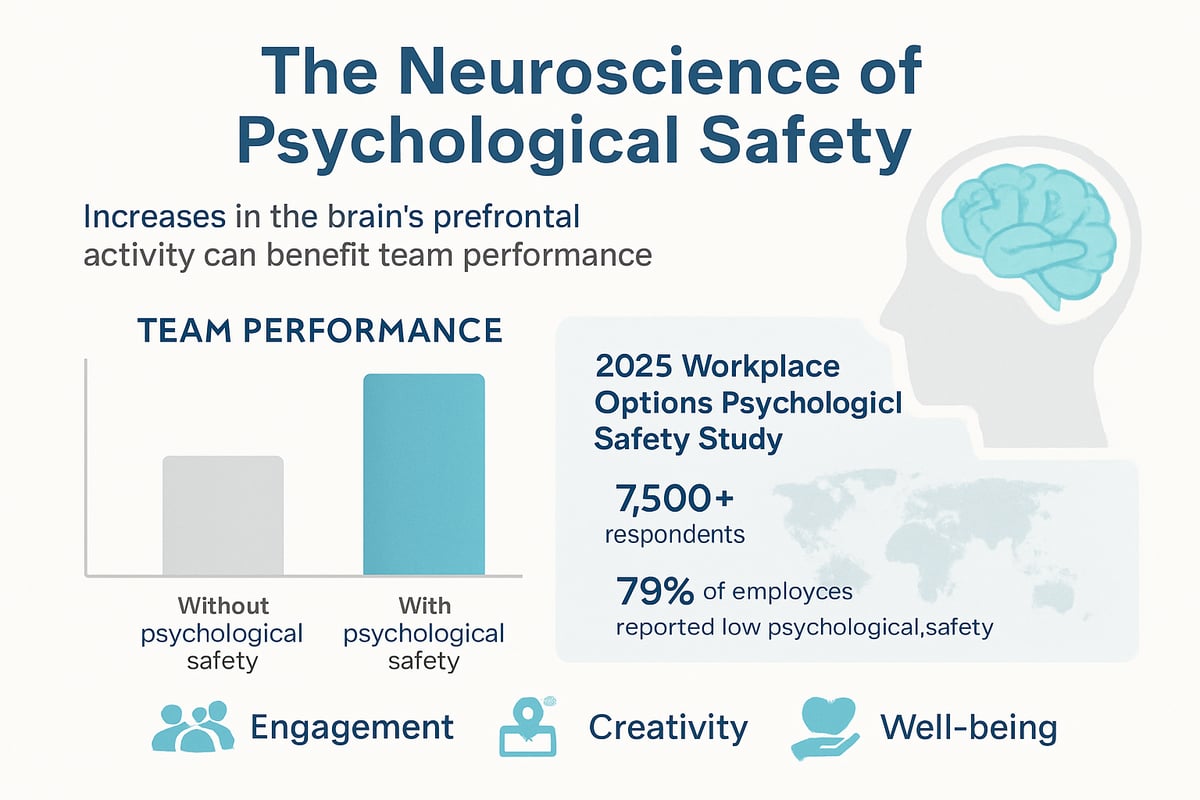
8 Essential Steps for Creating Psychological Safety in 2025
Creating psychological safety is the cornerstone of exceptional team performance in 2025. Organizations that master these eight essential steps empower their people to take risks, share ideas, and innovate without fear.
Below, we break down each step with actionable practices, real-world examples, and expert-backed strategies for creating psychological safety in today’s dynamic workplaces.
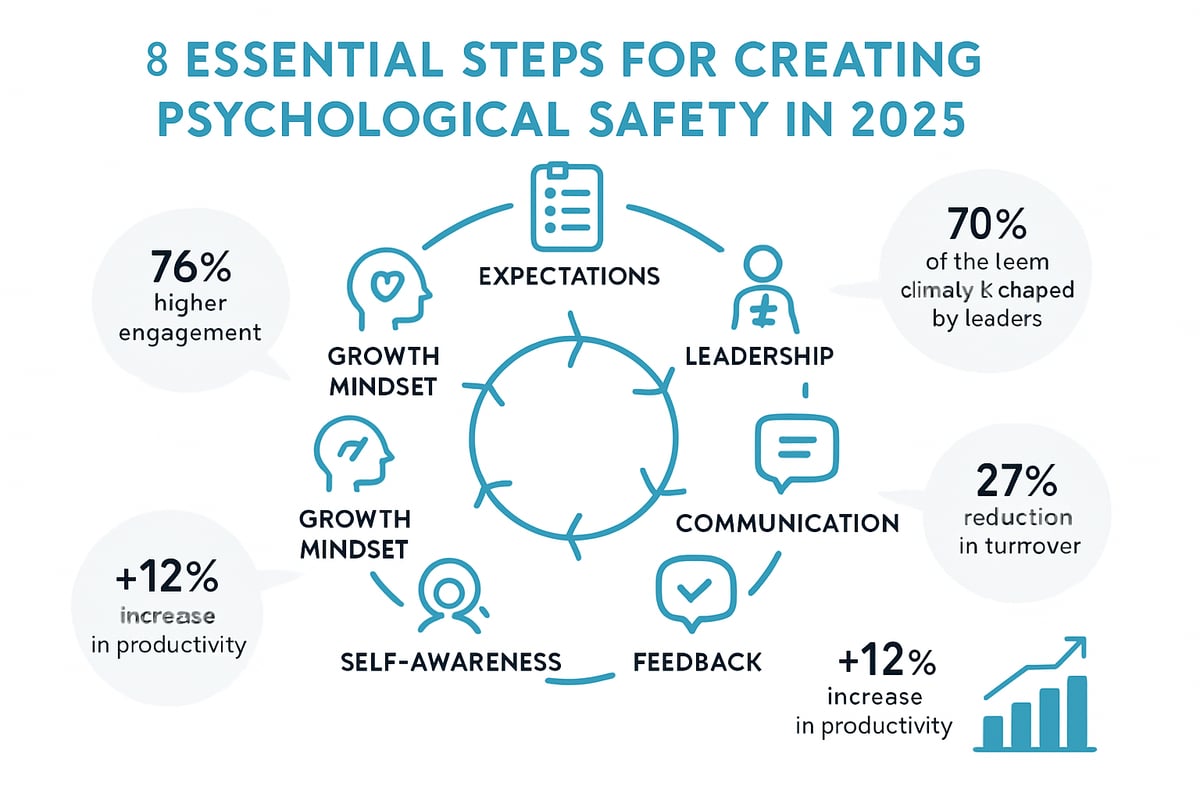
1. Establish Clear Expectations and Shared Purpose
The first step in creating psychological safety is to set transparent expectations for every team member. When people know what is expected, they feel more secure in sharing ideas and taking calculated risks.
Start by collaboratively developing team charters or “definition of fun” agreements. These set the tone for shared values, clarify goals, and lay out behavioral norms. For example, some teams use a “Wonderwall” approach, where everyone articulates what they are learning and why it matters. This encourages curiosity and open dialogue.
Make sure to clarify what creating psychological safety looks like in daily practice. Encourage questions, address misunderstandings openly, and discuss how psychological safety supports your organization’s mission. Revisit and update expectations regularly as your team grows or context shifts.
Aligning expectations with organizational values ensures everyone feels included and safe to contribute. Teams that do this not only foster trust but also accelerate performance and innovation. By making expectations explicit and evolving, you create the foundation for psychological safety.
2. Model Vulnerability and Accountability as a Leader
Leaders play a critical role in creating psychological safety. When leaders model vulnerability, they show that it is okay to make mistakes and learn from them. This transparency encourages others to do the same.
Share your own learning moments and admit when you do not have all the answers. Invite team input. Hold yourself and your team accountable in a supportive way. For example, leaders who acknowledge errors in meetings help normalize learning from failure.
Use “I” statements and encourage direct, respectful feedback. Focus on challenging ideas, not people. Recognize and reward vulnerability and constructive risk-taking. This practice not only builds trust but also drives high performance.
For more on effective leadership practices that support psychological safety, see Leadership in Manufacturing Insights.
By consistently modeling these behaviors, leaders set the standard for creating psychological safety across the organization.
3. Foster Open, Two-Way Communication
Open communication is a pillar of creating psychological safety. Encourage regular check-ins, feedback loops, and open forums where everyone’s voice is valued.
Implement structured discussion protocols, like “discussion diamonds,” to ensure balanced participation. In hybrid or remote teams, digital tools for anonymous feedback can help surface honest perspectives. Address tough conversations directly and provide conflict resolution training to your teams.
Start meetings with “pulse checks” or circle time to gauge team mood and readiness. Celebrate when team members speak up, especially about uncomfortable topics. Provide resources for communication skill-building to both leaders and team members.
By prioritizing open, two-way communication, you create an environment where psychological safety thrives, enabling faster problem-solving and stronger collaboration.
4. Encourage Constructive Feedback and Continuous Learning
Creating psychological safety means normalizing feedback as part of daily work. Use positive, future-focused models like “Glows and Grows” or TAG feedback to make feedback less intimidating.
Frame mistakes as opportunities for learning, not as failures. After projects, schedule retrospectives to reflect on both successes and areas for growth. For example, teams that debrief together build resilience and develop a shared sense of progress.
Train everyone to separate feedback from personal criticism. Connect feedback to professional development plans and growth opportunities. This approach turns feedback into a catalyst for continuous improvement.
Regular, constructive feedback loops reinforce psychological safety, empowering teams to adapt and innovate in changing environments.
5. Build Self-Awareness and Emotional Intelligence
Self-awareness and emotional intelligence are vital for creating psychological safety. Encourage reflection activities, like “traffic light” or “rock, paper, scissors” exercises, to help individuals identify strengths and growth areas.
Integrate emotional intelligence training into onboarding and leadership development. Create space for team members to share their feelings and support needs. For example, use check-ins to proactively address concerns and foster empathy.
Respect diverse emotional responses and communication styles. Offer coaching or mentoring to build self-awareness, and use assessments to track progress over time.
By developing emotional intelligence, teams foster empathy, reduce misunderstandings, and strengthen psychological safety at every level.
6. Facilitate Inclusive Collaboration and Diverse Perspectives
Inclusive collaboration is essential for creating psychological safety. Build structures that ensure everyone participates, such as rotating roles, forming small groups, or using digital collaboration boards.
Seek out and value differing viewpoints, and avoid groupthink. Assign a “devil’s advocate” or “perspective champion” in meetings to surface alternate ideas. Celebrate diversity of thought, background, and experience.
Train teams in inclusive facilitation, and monitor participation data to ensure equity. For actionable methods on aligning teams and supporting inclusive collaboration, visit Inclusive Team Collaboration Techniques.
Link collaboration skills to performance reviews and recognition programs. This approach ensures psychological safety is woven into the fabric of your team culture.
7. Promote a Growth Mindset and Resilience
A growth mindset is fundamental to creating psychological safety. Teach the difference between fixed and growth mindsets, drawing on Dweck’s research. Encourage language like “not yet” instead of “can’t.”
Recognize effort, persistence, and improvement, not just outcomes. Highlight team stories where members overcame setbacks or developed new skills. Offer resources for stress management and resilience building.
Normalize risk-taking and experimentation as part of innovation. Provide workshops on adaptability and mindset. By embedding a growth mindset, teams become more resilient and open to change, key ingredients for psychological safety.
8. Integrate Joy, Well-Being, and Psychological Safety into Daily Practices
Infuse joy and well-being into daily routines to support creating psychological safety. Celebrate achievements and milestones, big and small, through fun rituals and team-building activities.
Prioritize well-being with flexible schedules, mental health resources, and regular breaks. Encourage gratitude and peer recognition. Design both physical and virtual spaces that promote comfort and connection.
Monitor well-being metrics and act on feedback to keep psychological safety strong.
Measuring and Sustaining Psychological Safety in 2025
Establishing and maintaining psychological safety requires more than good intentions. In 2025, organizations must use data-driven methods to ensure they are truly creating psychological safety for every team member. The process begins with establishing clear baseline metrics to understand where your teams stand.
Surveys, pulse checks, and behavioral observations are essential tools. Regular assessments help leaders gauge the frequency of speaking up, the quality of feedback, team engagement, and retention rates. By tracking these indicators, you can see the real impact of creating psychological safety in your workplace.
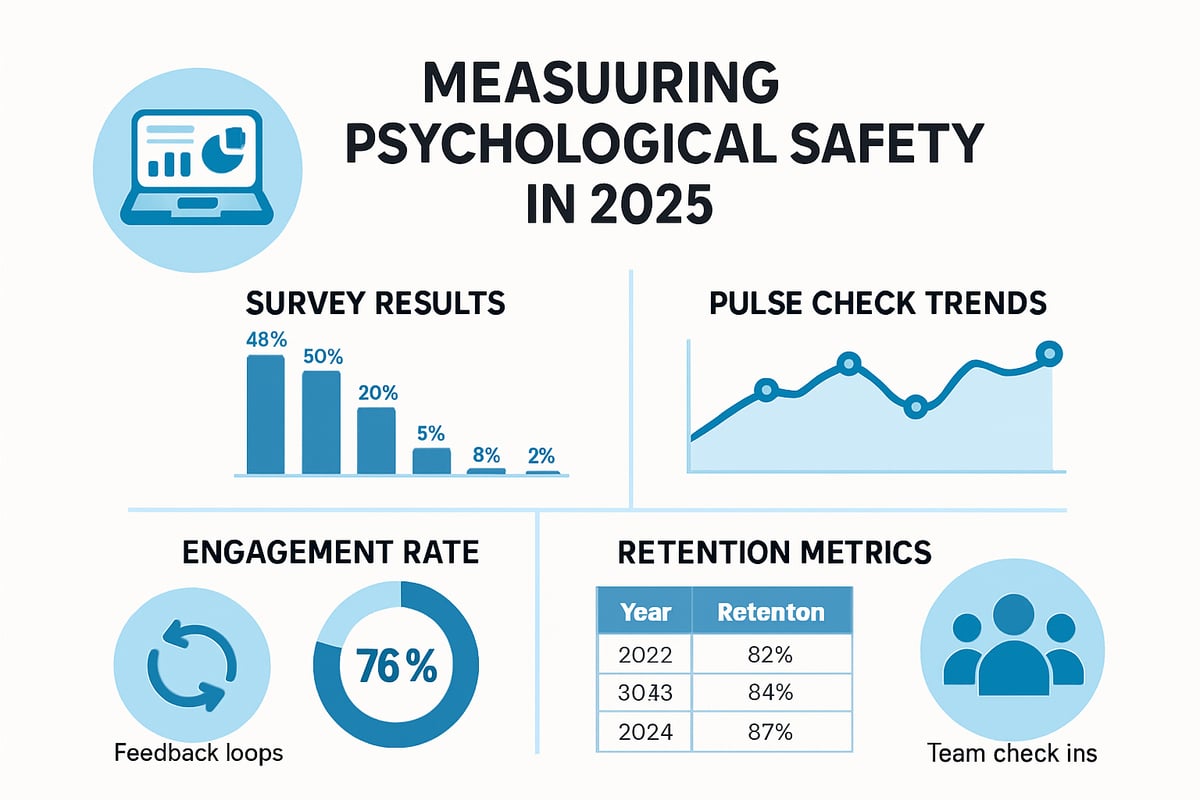
Leverage digital tools for real-time data collection, especially in hybrid and remote settings. Platforms that enable anonymous feedback and instant pulse surveys provide honest insights into team dynamics. For a snapshot of current trends and challenges, review the State of Psychological Safety Survey 2025 to benchmark your organization against global standards.
Table: Key Indicators and Measurement Tools
| Indicator | Measurement Tool | Frequency |
|---|---|---|
| Speaking Up | Pulse Checks, Surveys | Weekly/Monthly |
| Feedback Quality | Feedback Reviews, 1:1 Meetings | Ongoing |
| Team Engagement | Engagement Surveys | Quarterly |
| Retention Rates | HR Analytics | Annually |
| Psychological Audits | Third-party Assessments | Quarterly |
Continuous review and transparent communication are non-negotiable. Leaders must act on data, close the feedback loop, and demonstrate that employee input leads to real change. Embedding creating psychological safety into performance reviews and leadership evaluations ensures accountability at every level.
Quarterly psychological safety audits are gaining traction in forward-thinking organizations. These audits identify strengths and areas for growth, enabling rapid response to setbacks. Remember, setbacks are inevitable, but the key is treating creating psychological safety as an ongoing process rather than a one-time initiative.
To sustain momentum, tie psychological safety metrics to core KPIs and strategic objectives. This alignment keeps the work relevant and ensures long-term organizational impact. For more on building accountability and sustaining trust, visit Accountability Now.

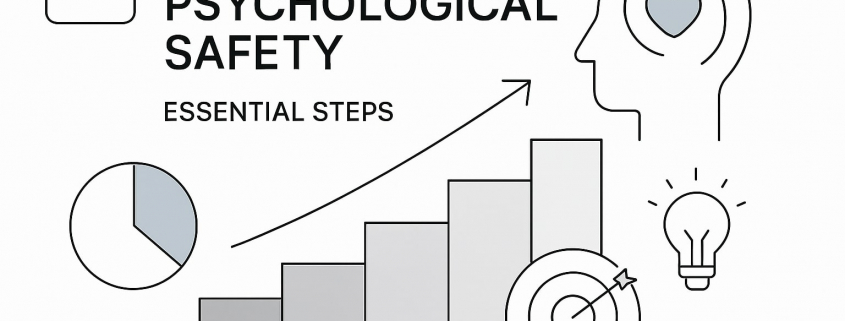


Leave a Reply
Want to join the discussion?Feel free to contribute!